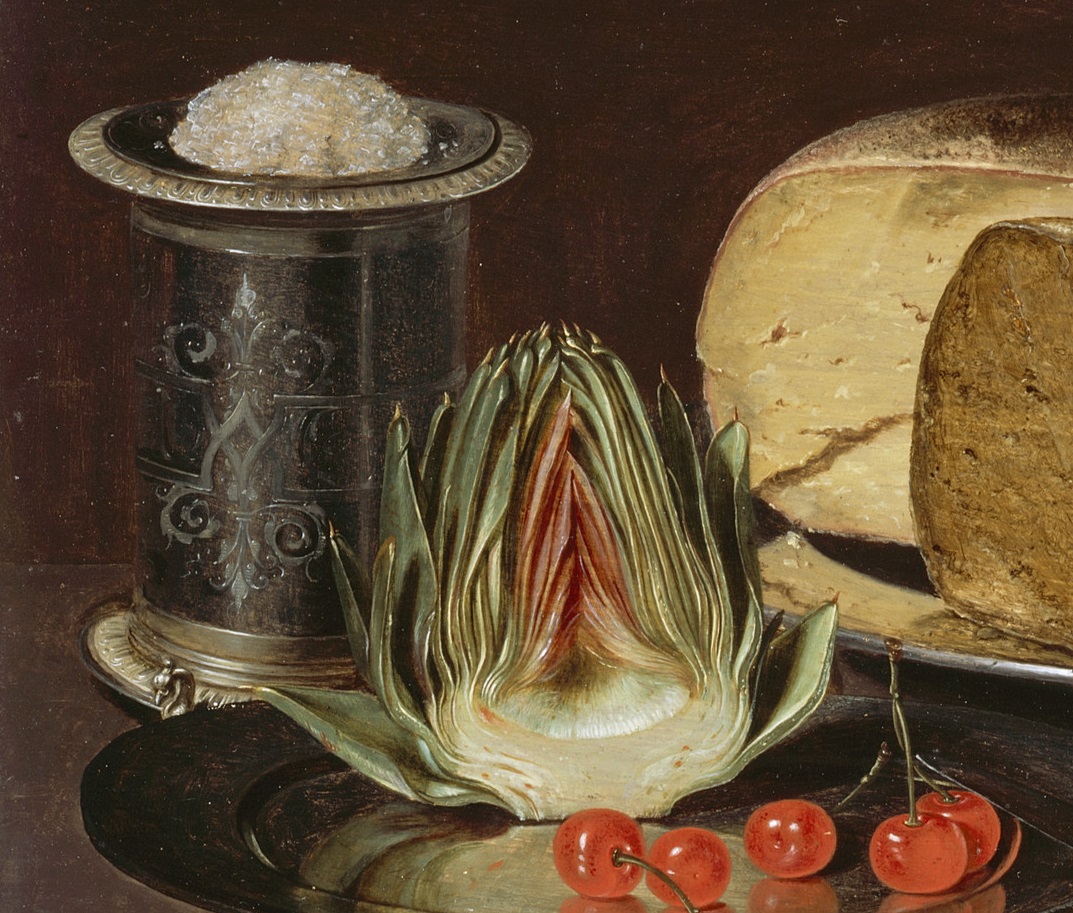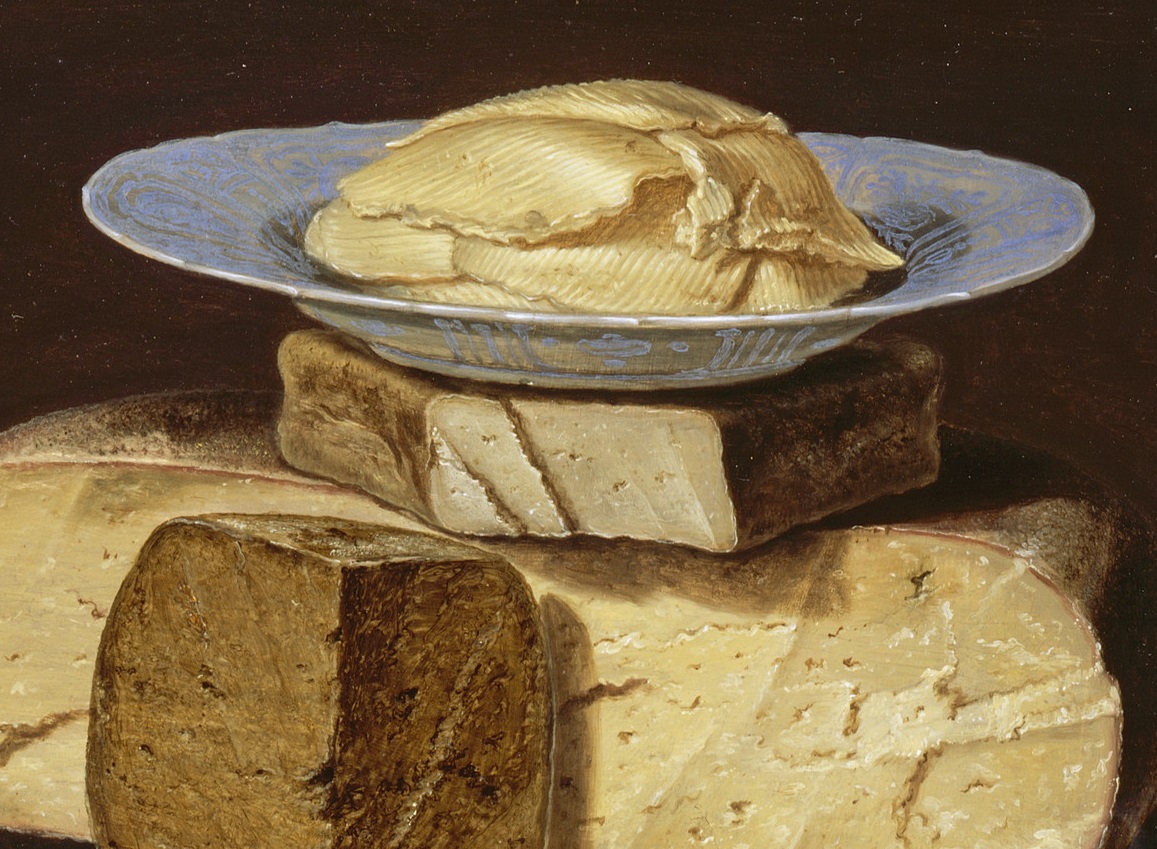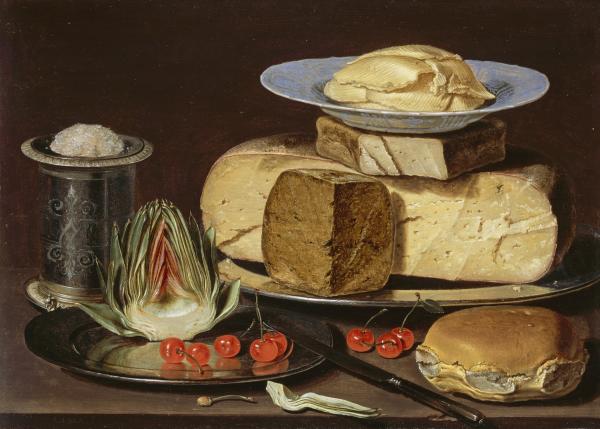As LACMA prepares for the 2026 public opening of the new David Geffen Galleries, the future home of the museum’s permanent collection spanning a breadth of eras and cultures, we’re sharing 50 iconic artworks that will be on view in the building over the next 50 weeks in the series 50 Works 50 Weeks.
Clara Peeters infused life and light to this simple spread of cheese, artichoke, cherries, bread, salt, and butter 400 years ago. Painted well before the invention of electricity or gas lanterns, the metal objects in Peeter’s paintings reflect light like water, while the rich, varied textures and bright colors of the food capture the eye of the viewer. Radiating through this painting is a palpable sense of pride for the thriving power of the Netherlands, but hidden amid the beauty of these commodities lies a warning.
The content of this painting is typical of a Dutch still life made in the early 17th century, with foods produced in the region placed carefully alongside desirable imported goods like salt and Chinese porcelain, highlighting the wealth of the people who will soon feast. Peeters’s low vantage point allows for an intimate composition that invites the viewer to reach out and sample a cherry or cut off a piece of bread. Adding to this illusion is Peeters’s skill and commitment to rendering texture. The reflective metal surface of the salt cellar stands out as it bisected by an artichoke, whose leaves progress from dry and structured on the outside to soft fibers on the interior composed of single tiny brushstrokes.

Shimmering on the left of the painting is a pile of salt proudly displayed in an embellished silver salt cellar. To a modern viewer familiar with a classic diner-style or playfully kitsch tableside salt shakers, this mighty vessel may seem a bit over the top, but in the 17th century, salt was a commodity comparable to gold. Salt was a vital tool of culinary preservation, keeping goods like dairy products and meats fresh before the invention of refrigeration. The Dutch, after exhausting their domestic supply, began importing salt around 1500, which, a little over a century thereafter, led to the foundation of the Dutch West India Company, whose salt extraction relied on enslaved labor in Africa and the Americas.
Featured prominently are three distinct varieties of Dutch-made cheese, stacked into an impressive mountain, which may present a lesson to the viewer. In the 17th century, the Netherlands was known for its production of cheese and dairy products. Cheese was a staple food, but such copious amounts of this prized product on display could have served as a reminder of the wickedness of excess and greed.

The butter, displayed in petals, is absolutely unlike the uniform, refrigerated sticks we buy at the store today. Here, it is freshly churned and adorns the top of the cheese like a crown. This addition invokes the Dutch aphorism “zuivel op zuivel is’t werk van den duivel” (dairy on dairy is the work of the devil), which warns of the senseless profligacy of eating cheese and butter at the same time. The themes of luxury and indulgence are only furthered by the blue porcelain bowl containing the butter. Art historians have speculated that this is a conscious choice by Peeters, not only to show off the thriving dairy industry of the Netherlands but also to act as an allegory for the vices of waste and overindulgence.
Fun fact: not only was Still Life with Cheeses, Artichoke, and Cherries created by a female artist with a thriving painting career in the 17th century, it was also owned centuries later by Johanna Suzanne Goekoopde Jongh, the first Dutch woman to earn a doctorate in art history.



